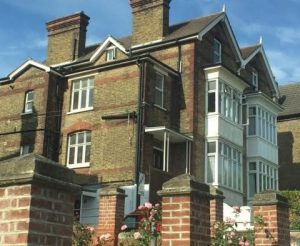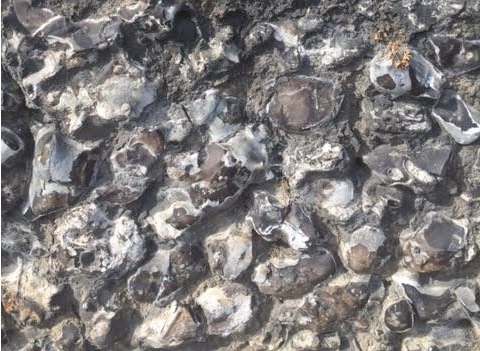Click here to read part one, ‘Listed Building Damp Proofing’. In this latest post we look at ‘Listed Building Chemical DPC’ by comparison with regular properties and the listed building we recently completed work on in Rochester.
 As I have stated before, chemical injection DPC has it’s place. In the right circumstances and in a suitable property, chemical DPC could well be the correct solution. However, regardless of the quality of the product used, chemical injection DPC has an extremely high failure rate. This applies to all injection products; whether pumped in with specialist equipment or squeezed in with a skeleton gun. It’s also not the solution to ingress via raised external ground-level.
As I have stated before, chemical injection DPC has it’s place. In the right circumstances and in a suitable property, chemical DPC could well be the correct solution. However, regardless of the quality of the product used, chemical injection DPC has an extremely high failure rate. This applies to all injection products; whether pumped in with specialist equipment or squeezed in with a skeleton gun. It’s also not the solution to ingress via raised external ground-level.
Theoretically the concept of a chemical DPC makes a lot of sense. The reason though for the high failure rate is due to the many variables involved. The success involved in the process of drilling holes at 100mm-120mm centers and pumping in a chemical is entirely reliant on the chemical-barrier evenly and uniformly distributing across a chosen bed-joint. In practice, this method requires a considerable leap of faith; one that doesn’t take into account any variables in the materials used in construction or the possible saturation (of water) in that particular bed-joint.
Even if you’re knowledge of damp proofing is minimal to non-existent, if you put a degree of thought to it, would you believe that holes drilled around the perimeter of a property and the injection of chemicals is enough to ensure the cessation of damp for many years to come?
To counteract the possibility of further ingress, many unscrupulous firms conceal this potential occurrence by advising the requirement for additional internal works, specifically replastering. In reality, it would only take the smallest of gaps where the chemical DPC hadn’t taken, to allow ingress to continue to rise up through the masonry; thus holding the company who installed the DPC liable to return and be duty bound to fix the problem.
On close inspection of the ME1 listed building in the center of Rochester, a 2m length of the rear wall had internally been constructed of flint and lime mortar (on top of six courses of stocks which constituted footings). The listed building chemical DPC had been installed in an undulating fashion, as the contractor must have tentatively worked his way around the flints. Ironically the slate DPC in the bed-joint between the stocks and flints remained effective and in good order.
Want to know what comes next? Part three (The Unnecessary Removal of Plaster in Listed Building Damp Proofing) will be online on the 9th October. In the meantime, if you have any questions about Listed Building Chemical DPC feel free to give us a call on 07970862057.
We are always happy to offer advice specific to your situation that will help you make the right choice for your property.

